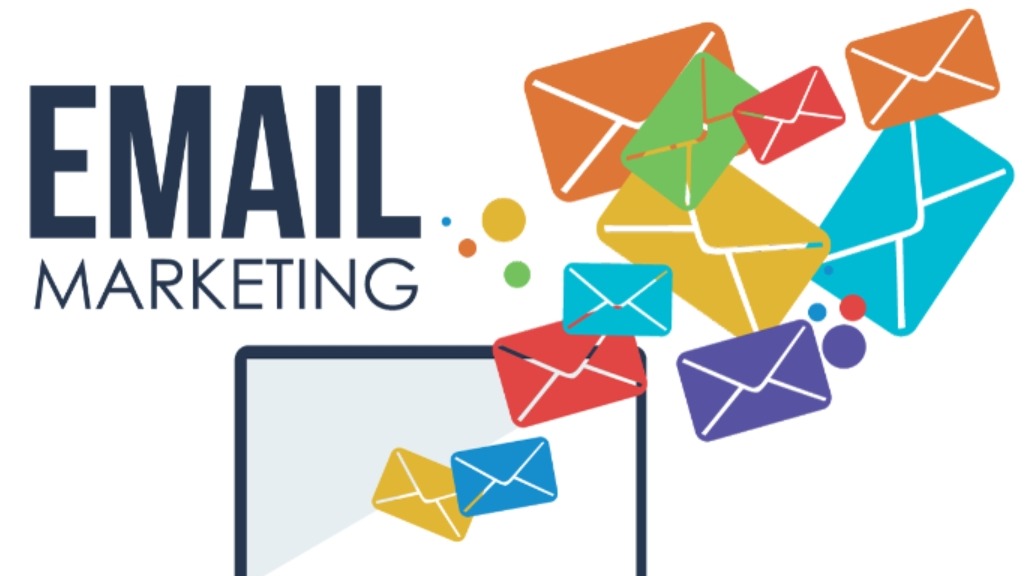There should always be only 2 types of Home Businesses.
One is a successful Home Business and the other is a failed Home Business. First, the successful business owners should find out why the other group failed, and the failed business owners should find out how the other group is successful. At one particular stage in everyone’s life, they will realize the importance of time, money and freedom. They will learn that having a Home business is an asset and one of the most effective form of business for an individual to reach the goal of having more time, money and freedom. Home Business Entrepreneurs can be slow walkers but the important point is they should never walk backwards. They don’t have to worry, if their progress is slow but the major concern is, they should be steady. Slow walkers, please understand that Experience makes you modified, Training makes you qualified and only Involvement makes you satisfied and successful. If you really want to enjoy free time with your family, spend more money to fulfill your child’s dreams and help others by helping yourselves, then Home Business is the best concept, that will help you to achieve everything. Any Home Business is started to be successful, but does it happen every time, everywhere and to everyone.
Nooooo….
In a classroom, where there are 50 students, only one student can achieve 1st position, 80% can achieve pass and 20% can just fail. Does this means that the tutor is not qualified? Does this mean that the teacher did not teach properly. The same way all the home businesses that yields good money are good businesses. Only the business owners should decide, whether they should come on top or just fail. When some people are able to achieve financial freedom through a particular business, why can’t the others doing the same business cannot achieve…? The problem is their ATTITUDE… They should understand that Winners don’t waste time in unproductive thoughts. Winners think constructively and they know that their level of commitment and consistency determines their success. Success is not an accident. It is the result of your attitude and your attitude is a choice. Hence Success is a matter of choice and not chance. If you really want to succeed, form the habit of doing things that failures don’t like to do. Learn the secrets of success from the life histories of successful people. If we identify and adopt the qualities, strategies and characteristics of successful home business owners, you too shall be successful. Success in Home Business is not magic or underground secrets to be revealed, it is nothing but the result of consistently applying some basic principles.
In Home Business, success is not only earning million dollars, but also earning the goodwill of our business associates, clients and followers. Moreover, Success in our Home Business should be duplicated, by teaching our subscribers or followers, everything from A to Z, so that his Home Business will be successful and he will make us more successful by default. With internet, people can leverage on internet to build their business at the comfort of their home and build dreams of having more time, money and freedom for themselves. When all Successful Home Business Entrepreneurs met in a seminar, their reasons for success was discussed and everyone came out with one single answer….made up of 4 words ILMB….and the meaning is I LOVE MY BUSINESS. I too love my business and that is why I am also successful.
Do you feel like every dime you make gets sucked into a black hole to pay bills and leaves you asking yourself, “Where did all the money go?” Want to know an age old secret? You have to make the money before you can spend it! How do you do that? It’s called INCOME PLANNING.
Here are some steps you can do every week to make more money.
RESEARCH YOUR MARKET – First, find out what products or services your customers want and then provide that. One way to find out what they want is to look over your sales receipts, and find out what product is selling the best. Ask the customers 1) why they bought the item, and 2) what they expected it to do for them. Now use what they said in your advertising to promote that product. PROMOTE TO YOUR MARKET – There is an art to promoting something so that it will be responded to by your customers. Promotion does not necessarily mean offering a discount. It’s more important to find out why a customer wants or needs what you have to offer, and what they will base their buying decision on. Price may not be as important as fast delivery and dependable service. Find inexpensive, but effective ways to promote. Collect business cards from potential customers, and send them a personal letter letting them know how your products/services can benefit them. It is one of the least expensive, most personal promotional actions you can do. A series of postcards mailed at regular intervals to current and potential customers can also be very effective. Another great way to get new business is to ask your satisfied customers for referrals. You can make it fun for your customers to participate by creating a referral game they can play, where they get something in return for a certain number of referrals who buy.
Let your customers help you out. They really do want you to do well in your business. SELL AND DELIVER – Selling is easier when you are genuinely interested in your customers and want to help them. ASK your customers what they need and want. Then it becomes much easier to sell them that product or service. For example, a family of 4 who wants a van to cart the kids and their equipment around to sports activities is going to walk off in disgust if the salesperson is showing them 2-door sports models, despite the fact that the sports car is a good deal. Once you’ve sold the product or service, fast, courteous, professional delivery is key to customer satisfaction. This is especially important if you are in a service business. Delivering what you promised, when you promised it, can mean repeat business and referrals for new business. PREVENT THE WASTE OF RESOURCES – For every dollar you agree to spend in your business, ask how it is going to bring $5 or more worth of income back into your business. Carve out a percentage of the income every week to fund a promotional budget and then figure out the most effective ways to reach your customers within the budget. It is no laughing matter when the income you worked hard to earn gets wasted on things that do not give you a return on your investment. REPEAT SUCCESSFUL PROMOTIONAL ACTIONS – Look back at when you were last making the most sales. Find out what your successful actions were at the time and do those actions again. Focus your time, energy, and creative thinking power on planning how to get the money in. That gets the CASH FLOWing in the right direction and puts your attention back on servicing your customers and you will enjoy your business even more.
There are a lot of less than forthright organizations that allegedly help individuals sell their inventions to industry. In all my years of working as a patent lawyer, I have never come across a single person who ever used one of these organizations to effectively market or sell their invention. However, I have met several who successfully marketed their inventions themselves. Before you take any steps to market your invention, you should take a few preliminary steps. Preliminary Patent Search – A preliminary patent search is generally a good first step. A preliminary search of various patent offices can be conducted for a reasonable fee (just contact a patent agent/lawyer), and it is even possible to conduct one for free (see the US patent office at http://www.uspto.gov/) Patent Application – Don’t publically disclose your invention until after a patent application is filed. Publically disclosing the invention before filing a patent application can potentially ruin the chances of ever being granted a valid patent. In fact, many Companies will not even talk to you until you have filed a patent application. Prepare a Formal Information Package – You should prepare an informative and concise information package describing you, your invention and the potential market your invention reaches.
The package should include color photographs of the invention, and a one page executive summary. Prototype – It is a lot easier to sell a product if potential buyers can see, touch and feel the product. Building a working prototype is often a key step in selling your invention. Of course, some products are difficult to prototype, in which case a non-working mock-up may have to do. In any event, create the most professional prototype or mock-up you can. Obtain Financing – Building prototypes and filing patent applications require funds. Finding that initial start up funding is often difficult; however, there are two tried and true methods, namely partnerships and incorporations. A signed partnership agreement is one way for a few people to pool their financial resources into a project. If several investors are involved, then an incorporated company is a better method. Essentially, the company takes ownership of the invention and the investors contribute money to the company in exchange for shares. The number and price of the shares can be tailored to suit the particular needs of the project. Now that we have dealt with some of the preliminary issues, let us look at the mechanics of selling your invention to a company. The actual steps in the process are as follows: 1. Compiling a List of Potential Buyers – Finding a company that is willing to buy the invention is the most challenging part of the process. It begins by generating a list of companies that may be interested in the invention. You can use a business directory to generate that list. Business directories list companies by the products they manufacture (or services they provide) and include basic information about these companies such as their address, phone and fax number, and the name of the president (CEO or owner). Suitable business directories may be found in the business section of the local reference library.
2.
Contacting Potential Buyers – Your list of potential buyers may include literally hundreds of companies.
You simply call up each company on the list and ask them if they would be interested in receiving a solicitation for a new invention. Then get the contact information about who in the company to send your information to. 3. Presenting the Invention to Prospects – After you have thinned out your list, your next step is to submit your information to each of the companies on the list. This may involve calling the people identified to be the “contact” for new product ideas and telling them that you are sending them an information package about your product. Your package should include a cover letter and a one page synopsis of your product (including a picture). The information must be clear, concise and it must appear as professional as possible. Don’t try to overwhelm the recipient – you want to impress them, not burden them. 4. Follow Up – Do not expect the prospect to come to a quick decision concerning the invention. It may take a prospect many months (even a year or more) to make up his/her mind on a project. You have to be patient. It is important to periodically follow up with the company but do not “pester” the prospect. Remember, the people considering your invention are probably quite busy with several other projects – annoying them may do little to speed the project up and may cause them to drop the project altogether.
5. Negotiations – If you find a company that is interested in picking up the project, then be ready to negotiate the terms of the sale. The key here is to be reasonable. From my experience, nothing kills off a potential licencing deal faster than an unreasonable inventor. Realistically, the most you are likely to get is a good return on your investment. Asking for a smaller signing fee together with a modest royalty is far more likely to generate a signed agreement than holding out for a big payoff. 6. Royalty Amount – I am usually asked the question “how much can I sell my invention for”. I don’t know the answer; however, here are a few rules which can help you figure out a reasonable royalty rate. First of all, try to negotiate a royalty which is broken down in to two parts, an initial signing payment and an annual royalty payment. The initial payment should cover most of your costs of the project. The annual royalties should represent an amount which is sufficient to represent a good return on your investment without being a burden on the manufacturer. The general “rule of thumb” is to ask for a small percentage (1% to 5%) of the net sales of the product. It is also possible, and in some cases advisable, to fix the annual royalty payment to an easily calculated amount (e.g. $1.00 per unit sold). Selling your invention to a manufacturer is possible but it is not easy. How successful are you likely to be? From my experience, individual inventors are far more likely to successfully sell their invention by themselves then by going through some invention promotion organization. Like any business, the chances of success are a function of your determination, knowledge and willingness to take risks.
Filed Under Marketing Techniques | Comments Off on Invention Marketing and Licensing for the Inventor
If you are not a full-fledged geek, AKA, programmer this is new tool is not for you! A Silicon Valley startup launched a search engine in March that will allow developers to search for code and source code.
Sorry Martha, (Steward that is) I’m afraid your wonderful “Docorating the Drive with Pink Lillies” will not appear in the search engine result on this site. The name of the engine is Krugle, and it will provide simple search for retrieving information related to source code – as well as other techy info – all from an easy to use, un-cluttered GUI. It is surely possible to use Google for programmers to find source code, but this can be a tricky task. The new engine functions by crawling, indexing, and parsing its information from open source directories and archives. It also pulls its results from Email lists, blogs and websites. Kruggle says the site will run using open source and private technology. For open source, Apache Software called “Nutch and Lucine” is used. The parsing is done using a generator called “Another Tool for Language Recognition.” It is similar to two other search tools called Koders and another Codefetch. What should be different with Kruggle is it will permit programmers and developers to notate the results they find, make bookmarks, and save their results in their own space (incidently, in early May, Google announced a similar feature that allowed users to save results in their own workspace). Using the workspace gives coders exact URLs in order to share their results with others. Users will also be able to separate coding pieces to see the differences between various languages. For example, it may be that an ASP programmer could search for “ASP content management system”.
Filed Under Marketing Techniques | Comments Off on Krugle: The New Search Engine Defiantly Not for “The Rest of Us”


